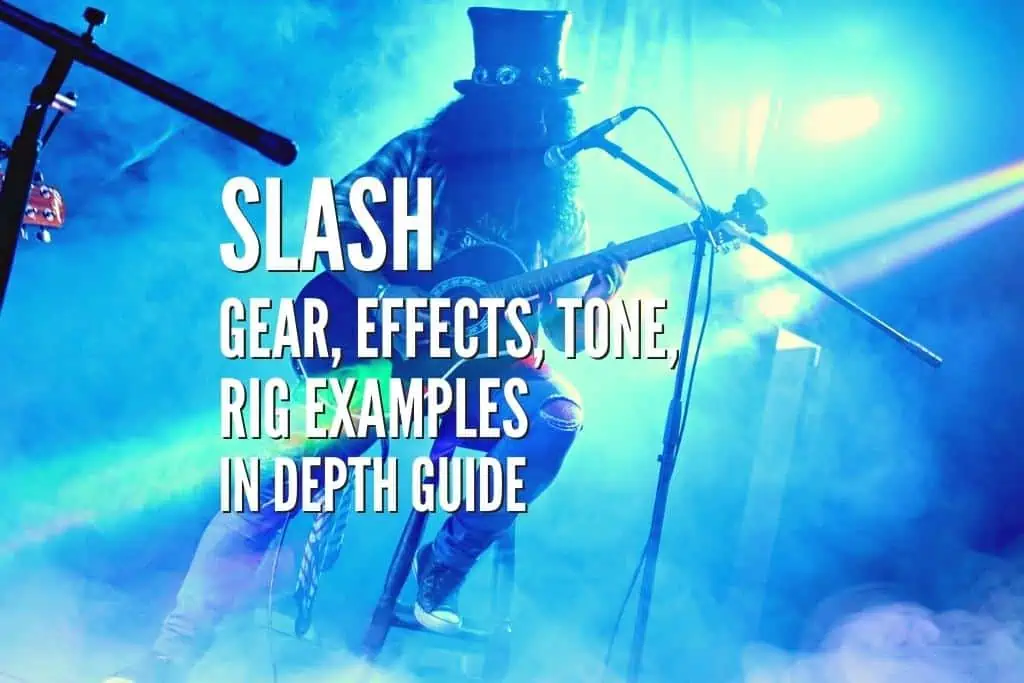Saul Hudson, commonly known as Slash, is one of the most iconic guitarists of rock history, not only with his great playing and composing skills but also his distinctive style and charisma. The British-American guitarist marked his name as one of the greatest guitarists ever with his works since the 80s with Guns N’ Roses.
Although Slash is mainly known as the lead guitarist of the legendary hard rock band Guns N’ Roses, he also had other successful projects like Slash’s Snakepit Velvet Revolver, as well as his solo career and his collaborations with other famous musicians like Myles Kennedy and Lenny Kravitz.
Besides his distinctive style with his black felt top hat combined with black glasses and anarchic punk dresses like black leather jackets and pants along with his long curly hair, his playing style is also quite distinctive with a lot of string bends as well as hammer-ons and pull-offs along with his regular use of chord tones in the pentatonic minor scale.
Another characteristic aspect of Slash is his gear choices. Although he used many guitars throughout his career and he is a collector who has hundreds of instruments, amps, and pedals, his loyal companion has always been the Gibson Les Paul. You can not think of Slash without a Les Paul and his distinctive tone with lots of sustain making the guitars cry.
So, let’s dive deeper into Slash’s equipment to deconstruct his tone and style.
Slash’s Signature Guitars
Gibson Slash Les Paul Standard
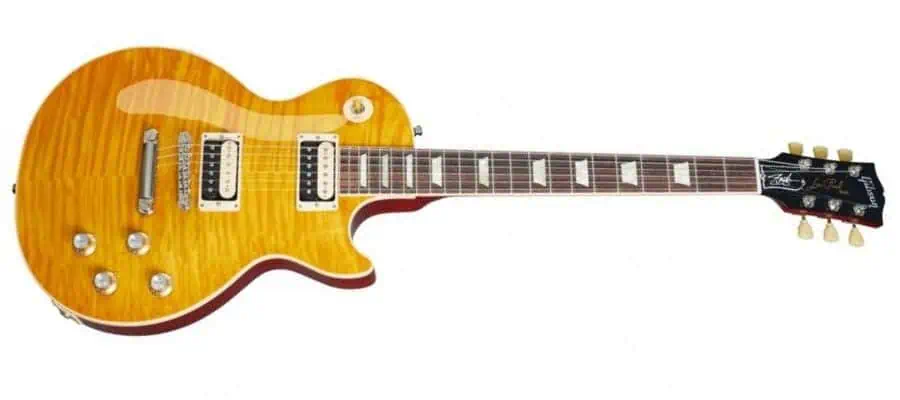
When talking about Slash, the first guitar that comes to mind is the Gibson Les Paul. He has many different variations of Les Paul he used at different times in his career. One of his favorite ones is the Gibson Slash Les Paul Standard, which is his signature guitar Gibson created according to his needs and desires.
The guitar has a C-shaped neck profile, Burstbucker Alnico II pickups, a signature on the truss rod, and a few designs specific to Slash himself. It has different finish options for different tastes.
The sound of the guitar is perfect for classic rock, which is close to the Jimmy Page tones, which Slash likes a lot. It has an amazing bluesy feel on the lead with great sustain and enough crunch on the rhythm guitar sections.
There is no wonder why Slash used this guitar in every part of his career with different bands and projects. It is an important part of his distinctive tone. This guitar also has different versions, as it was upgraded several times in different years starting from 1990. The first Custom Les Paul made for Slash was in 1990, and it is still in production with slight alterations.
Epiphone Slash Les Paul Standard
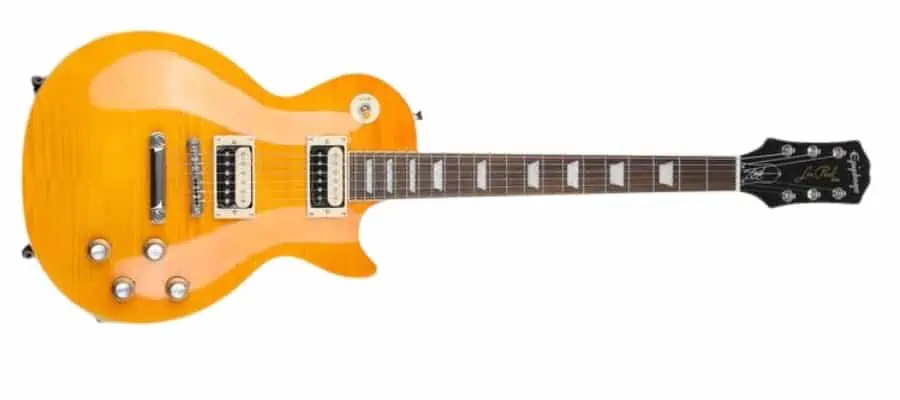
If you do not have the budget for Gibson Slash Les Paul Standard, you can check the more budget-friendly version of the instrument made by Epiphone.
Gibson Les Paul Slash Snakepit Signature
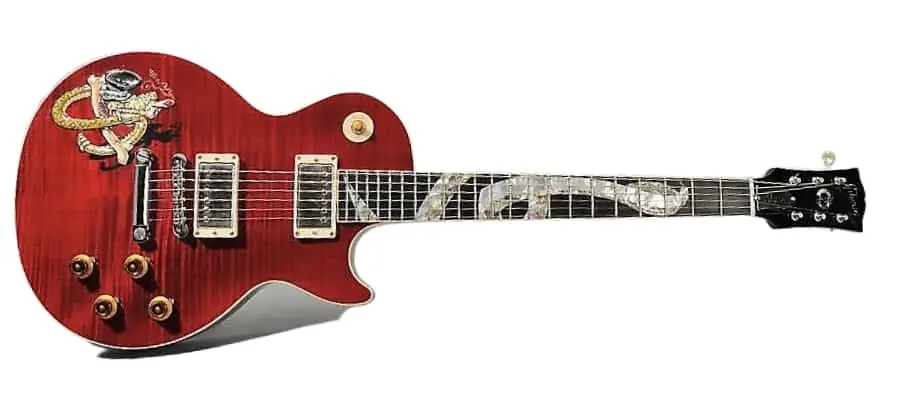
A version of the Gibson Les Paul Slash signature series was the Snakepit Les Paul created in 1996. It is the rarest and most collectible of any of the Slash Signature Les Pauls as it is limited to only 50 pieces.
The guitar has Seymour Duncan Alnico 2 Pro pickups, a red finish, and amazing looking snake carving on the body and on the neck. He used this guitar in the studio and on stage in his Snakepit era around 1996 and 1998.
Gibson Firebird Custom Slash Signature
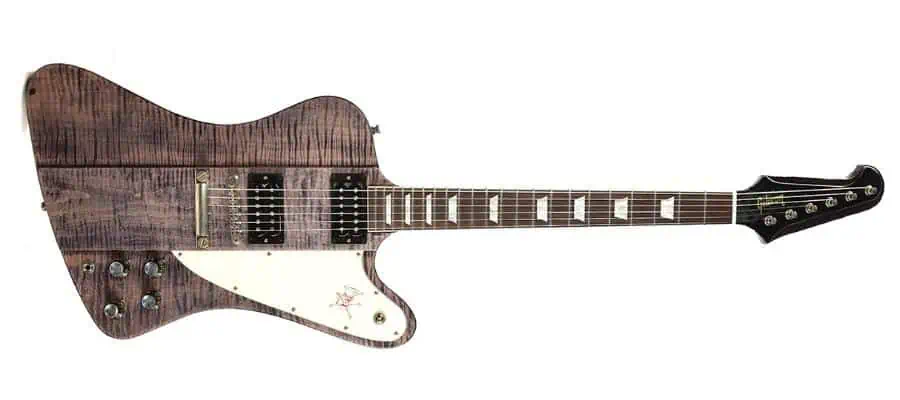
This guitar is a bit of a departure from Slash’s iconic Les Paul style, but Slash made it as close to a Les Paul as possible by adding many Les Paul characteristics to the instrument, including humbuckers, historic Les Paul wiring and pickup spacing, and a solid figured maple cap. It is one of the latest guitars he used as the model was created in 2017, mainly with the new Guns N’ Roses era.
Epiphone Slash Signature Firebird
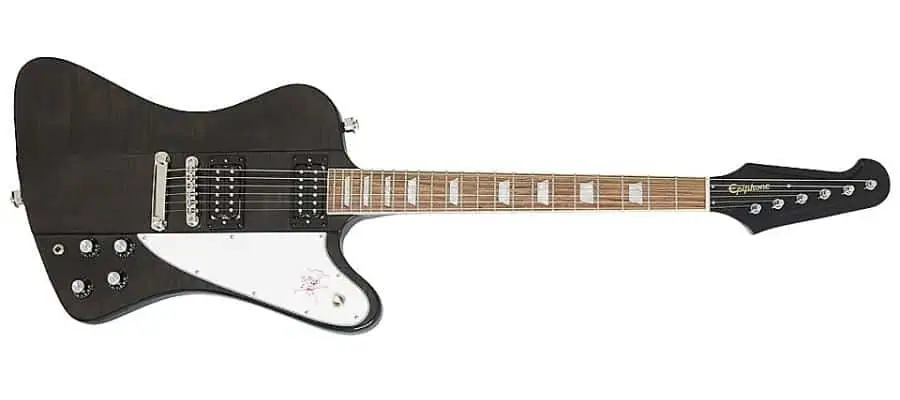
You can check the Epiphone Slash Signature Firebird, which has relatively cheaper parts and construction compared to Gibson Firebird Custom Slash Signature. But, it has a similar sound and style, created for Slash-tone fans with tighter budgets.
Gibson Acoustic Slash J-45
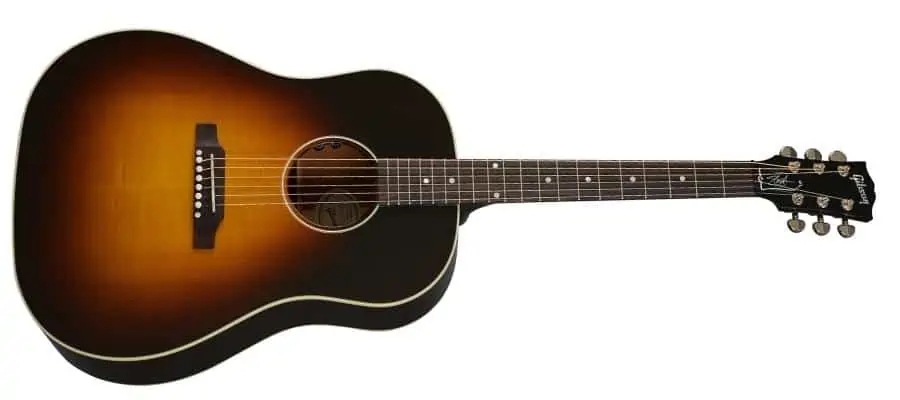
The signature acoustic guitar of Slash is Gibson Acoustic Slash J-45. It features traditional elements combined with handy modern features like a custom Slash rounded C-neck profile, a flatter and more modern 16” fingerboard radius, and a versatile custom LR Baggs VTC pickup for natural acoustic sound.
Epiphone Slash J-45
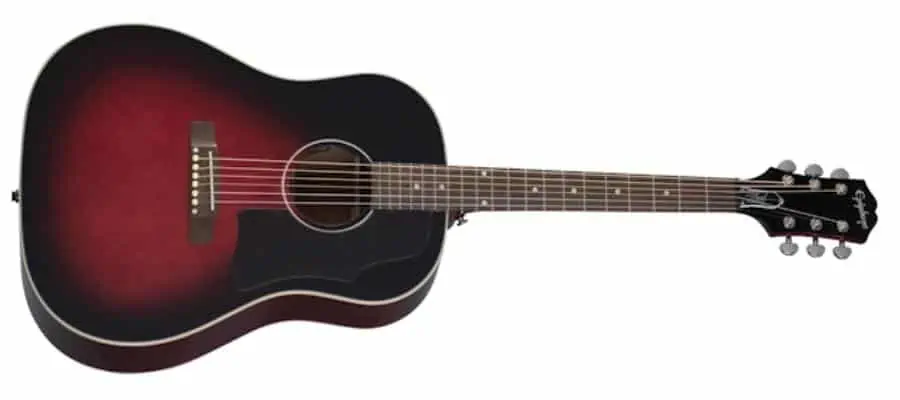
There is the Epiphone version of Gibson Acoustic Slash J-45 with slightly cheaper construction for tighter budgets.
Slash’s Electric Guitars
Memphis Les Paul Copy

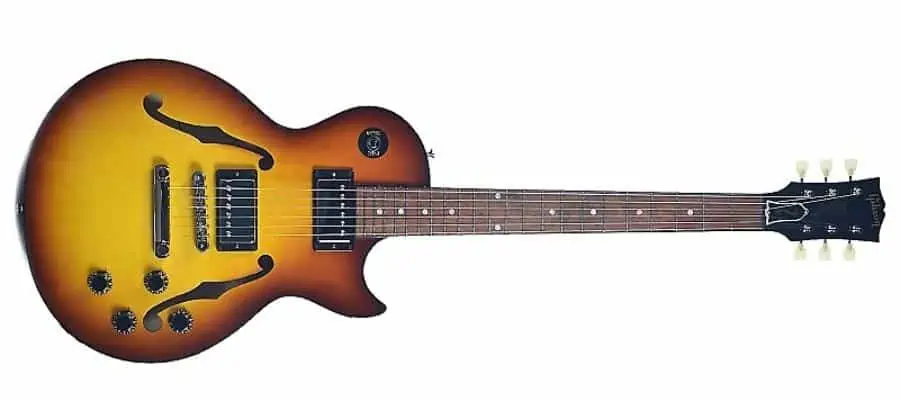
One of the first guitars Slash used was a Memphis Les Paul copy before he settled down with Gibson Les Pauls in 1985. He also experimented with other guitars in his first years, like the Gibson Explorer copy B.C.
and Jackson Superstrat, but he liked the Les Paul sound and style the most.
B.C. Rich Warlock
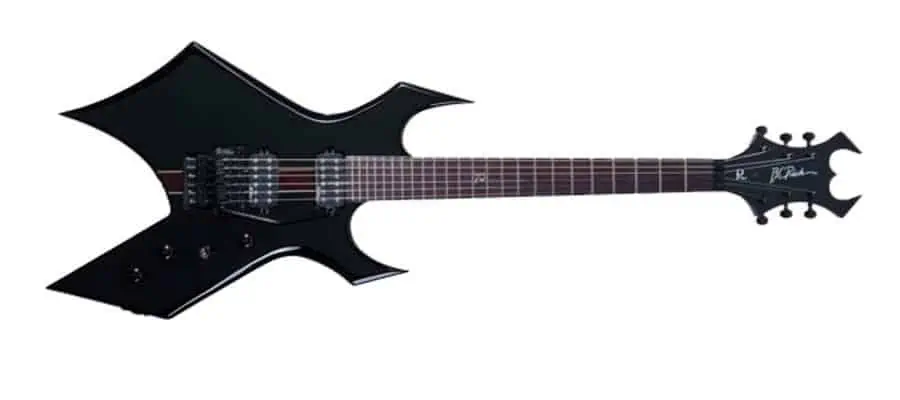
As can be seen in this photograph, another one of Slash’s first guitars was B.C. Rich Warlock, which he used in the studio for the early Guns N’ Roses songs Reckless Life, Nice Boys, and Move To The City. The guitar has a double humbucker with an eye-catching edgy, eye-catching design.
B.C. Rich Mockingbird
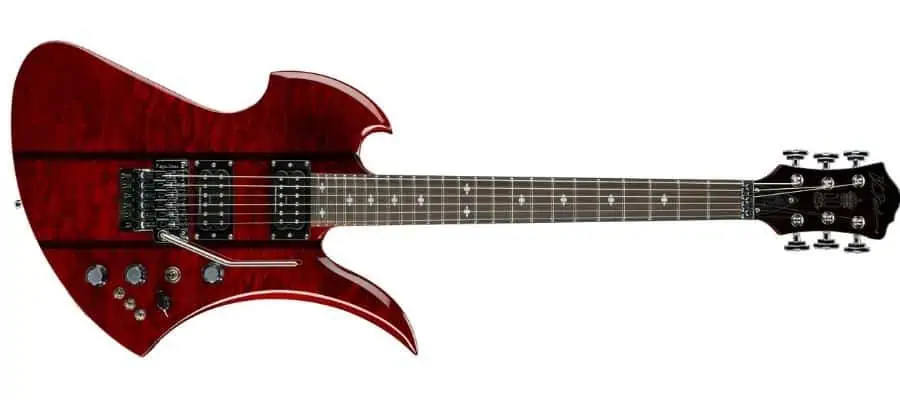


Another one of Slash’s first guitars is the B.C. Rich Mockingbird, which he also used later in his career with most of his bands. The guitar was used in the recordings of lead guitar partitions of many songs such as The Truth, You Could Be Mine, The Alien, and Headspace. Slash also uses the guitar in his live performances occasionally.
Gibson Les Paul Standard 1959
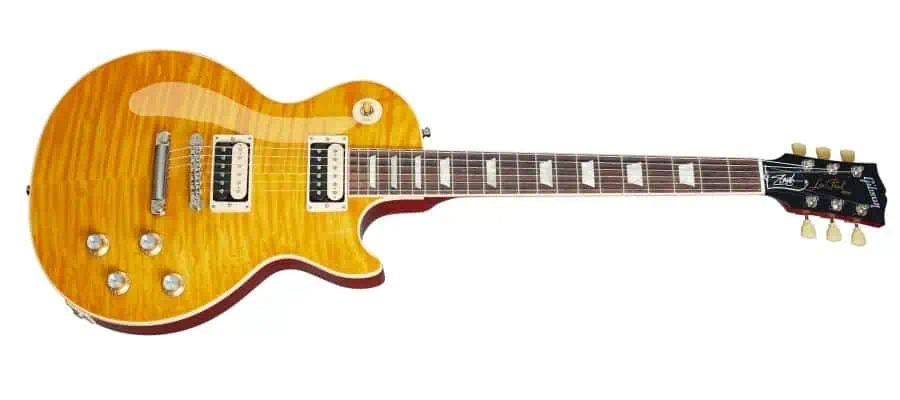

Coming to the iconic guitar of Slash, Gibson Les Paul Standard 1959 is definitely Slash’s most faithful companion. Most of his signature guitars are based on this Les Paul model. He used the guitar in almost every album, and it has been his main guitar on the stage since 1987 when he bought it.
The guitar features a pair of Seymour Duncan Alnico II humbuckers with black-and-white zebra coils.
Gibson Les Paul Goldtop 1956
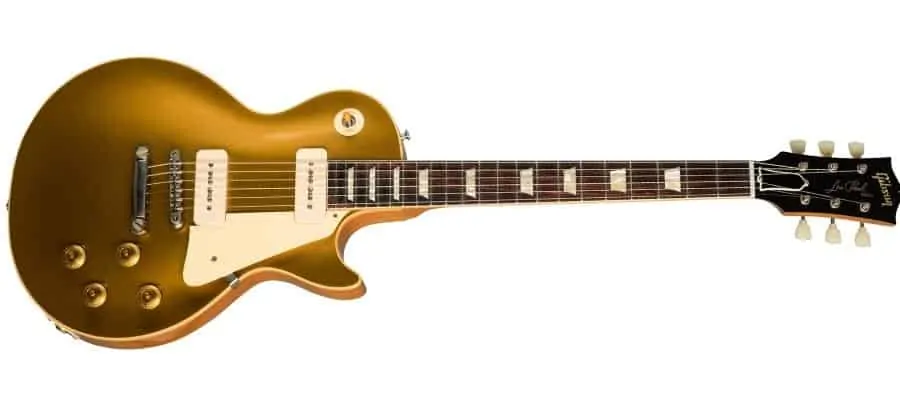
For the rhythm guitar sections, Slash used Gibson Les Paul Goldtop in 1956 regularly during the Guns N’ Roses days. The guitar can be heard in the songs such as Estranged, Fall To Pieces, and You Got No Right. The guitar has a distinctive gold finish which looks great. The guitar can be seen in the photo of Slash’s Les Paul collection.
Gibson Slash Les Paul Appetite


Another signature Slash guitar is the Gibson Les Paul Appetite which is actually the replica of the Les Paul Slash used in the legendary Guns N’ Roses album Appetite For Destruction. He saves the original guitar in a safe place but uses these replicas on the stage and almost in many recordings for the rhythm guitar sections. The guitar can be heard in the songs like Standing In The Sun, Halo, and Bad Rain.
Gibson Les Paul Standard 1976
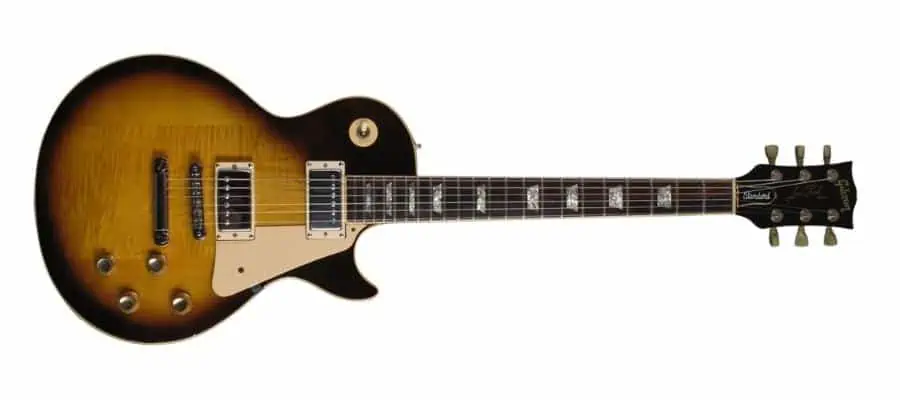
Another Les Paul version Slash likes are the Gibson Les Paul Standard 1976, which has the 3-piece maple neck and a sandwich body of the 70’s Les Pauls. It has a super warm tone with great sustain, just like Slash likes. He used this guitar mainly on the stage with Snakepit and Velvet Revolver. It can be seen in Slash’s Les Paul collection photo.
Gibson Slash Les Paul Standard 2008
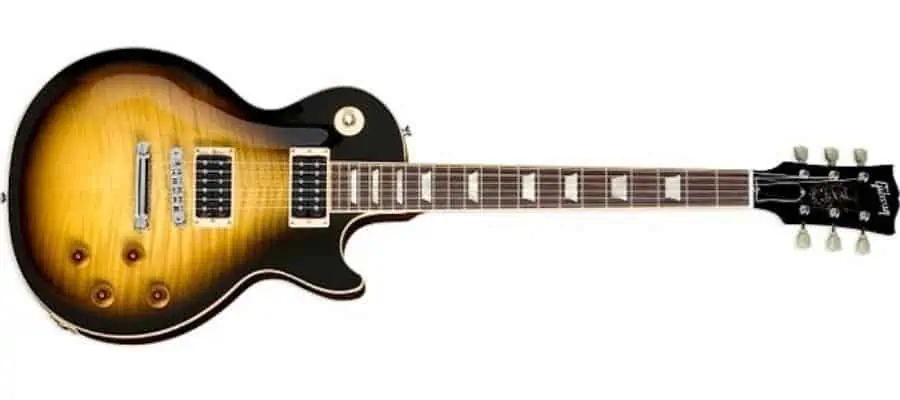
Based on the Gibson Les Paul Standard Slash received in 1988, which became his no 1 guitar through the years, Gibson Slash Les Paul Standard 2008 is the guitar Slash used in the Velvet Revolver years. According to the Gibson article, this is one of the remakes of the Les Paul he used in Guns N Roses era. The guitar is a limited production and features a carved maple top, one-piece mahogany back, and rosewood fingerboard along with a gold finish.
Gibson Flying V 1959


Apart from Les Pauls, Slash also uses other Gibson guitars such as the Flying V 1959, which he used as his lead guitar in the studio for the recording of Live And Let Die, Estranged, and Knockin’ On Heaven’s Door. The guitar has a great sustain which makes it ideal for Slash-style solos.
Gibson Explorer 1958

Another Gibson Slash used for some recordings of solo sections in the album Use Your Illusion II in 1992 was the Gibson Explorer 1958. He talks about this guitar in his autobiographical book, Slash by Anthony Bozza.
Jackson Firebird Custom Shop

In the early Guns N’ Roses days, Slash was using a Jackson Firebird Custom Shop before he was decided on the Les Paul. The guitar had a black finish, Floyd Rose bridge, ebony fretboard, 22 frets, and two humbucker pickup configurations, which can be seen in this photo.
Gibson SG 1960
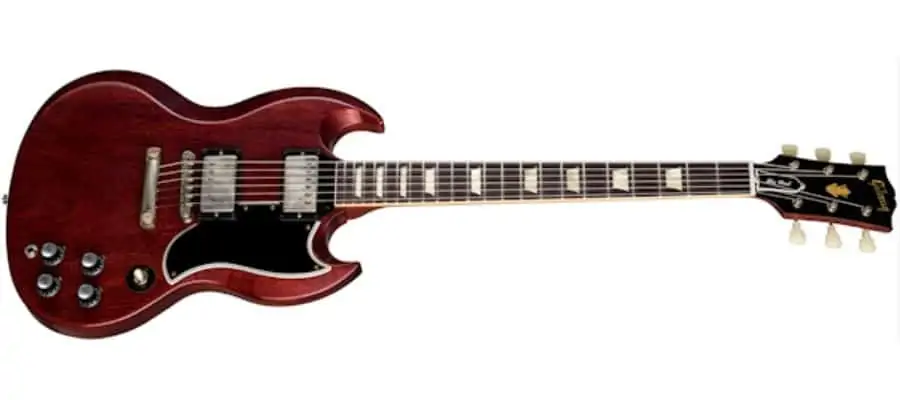
Slash also experimented with a Gibson SG in the studio and decided to record the Guns N’ Roses song My Michelle with a Gibson SG 1960 model. His SG can be seen in the photos of his guitar collection.
Gibson ES-335 1967
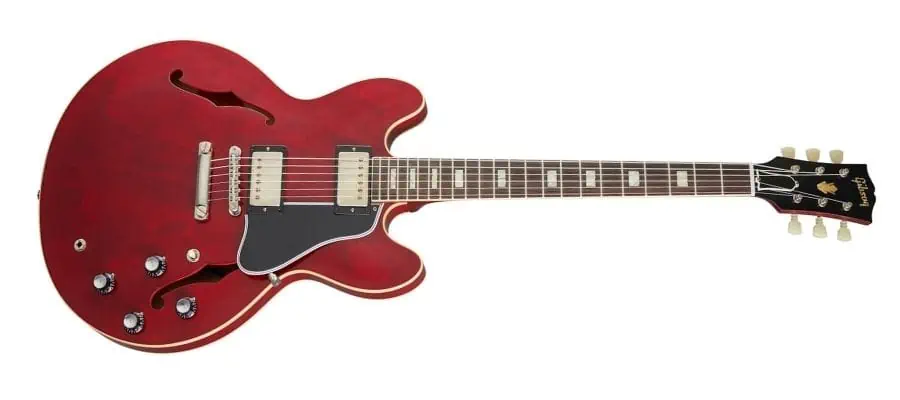
Moving on to another Gibson Slash used in the studio, Slash recorded Back To The Moment and Loving The Alien with a Gibson ES-335 1967 model. The iconic vintage guitar had a bluesy jazz sound which Slash liked for the rhythm parts of these songs. He sometimes uses it also on the stage which can be seen in the photo.
Gibson Les Paul Junior
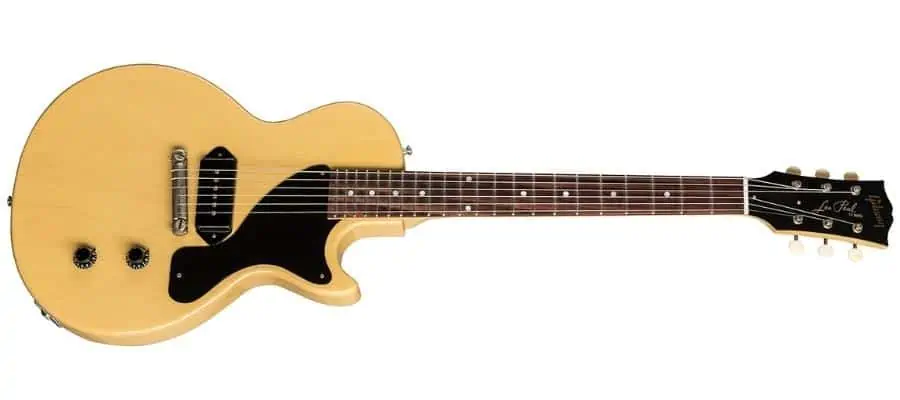
For slide guitar, Slash’s choice was a Gibson Les Paul Junior Double-Cut TV Yellow model guitar. The guitar can be seen in the photo of Slash’s guitar collection and can be heard in the song 30 Years To Life.
Gibson Les Paul 12-strings 1990
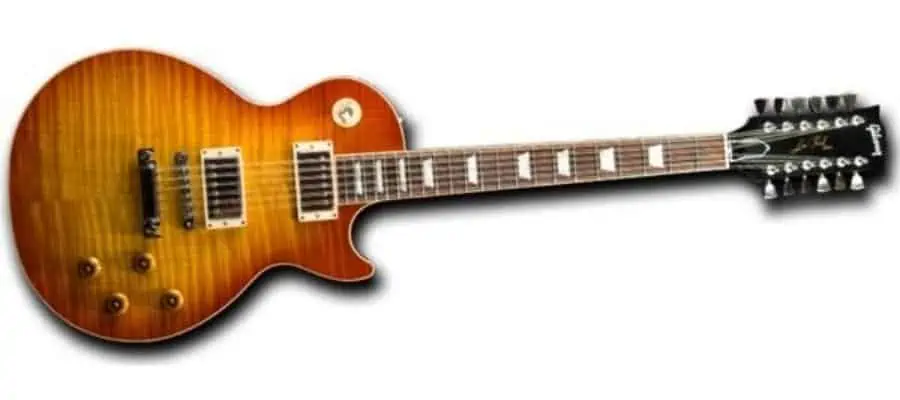
Slash also likes the clean sounds of 12-string electric guitars, which is the reason he used the Gibson Les Paul 12-strings 1990 model for the clean parts of the songs You Got No Right and The Dissident. The guitar had a double humbucker configuration and traditional Les Paul characteristics but with 12 strings.
Fender Stratocaster 1965


Although Slash is famous for his collaboration with Gibson and his iconic Les Pauls, he also used Fender Stratocasters on many occasions. He does not prefer it on the stage, but in the studio, he uses it for some lead guitar sections of Guns N’ Roses and other projects. In songs such as Yesterdays, So Fine, What Do You Want To Be, Back And Forth Again, Sucker Train Blues, and Gravedancer, he recorded the lead guitars with a Fender Stratocaster 1965.
Fender Telecaster
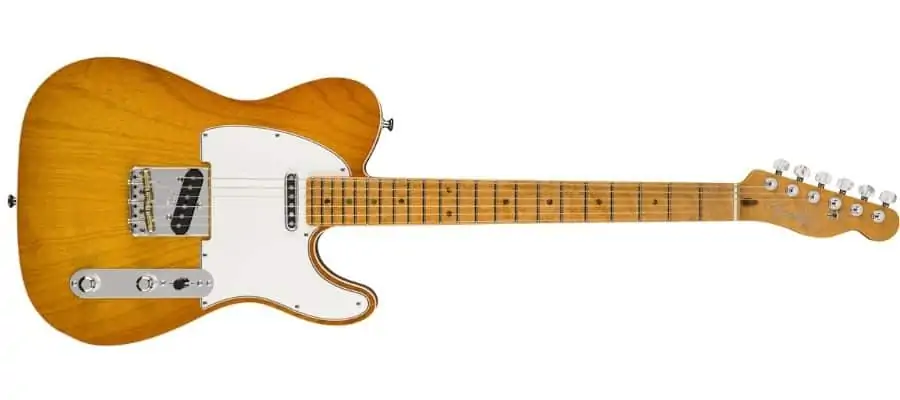
For the rhythm sections, Slash experimented with a Telecaster, especially when he wanted a more alternative, less distorted vintage tone. For instance, Slash can be heard using his Telecaster in the rhythm sections of his song Sucker Train Blues. The guitar can be seen in the photos.
Gibson EDS-1275 Double-Neck Electric Guitar
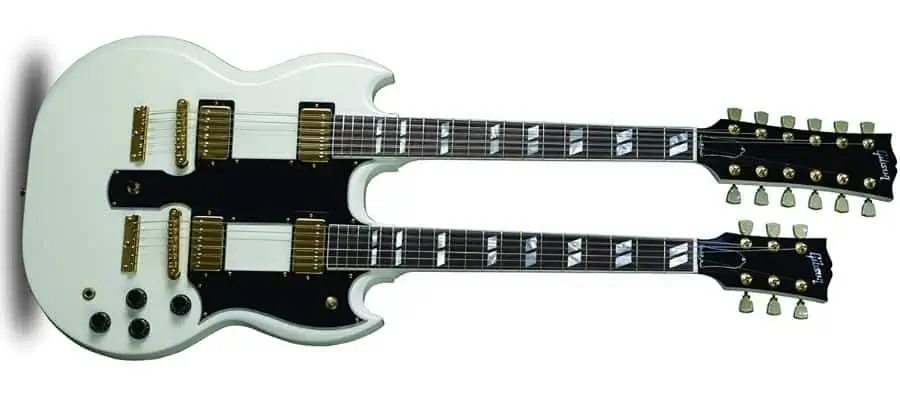

Slash likes to play live with double-neck guitars in his shows. His first choice of double-neck guitar is the Gibson EDS-1275 Double-Neck Electric Guitar. He purchased this guitar in 1990 and used it often on the stage.
One neck features 12 strings which he uses for clean parts, and the other neck features a traditional SG-style neck. Both necks are equipped with double humbuckers, and the guitar has a great creamy white finish. He uses this guitar often while playing the song The Dissident live.
Slash 1966 EDS-1275 Doubleneck – Signed/Aged
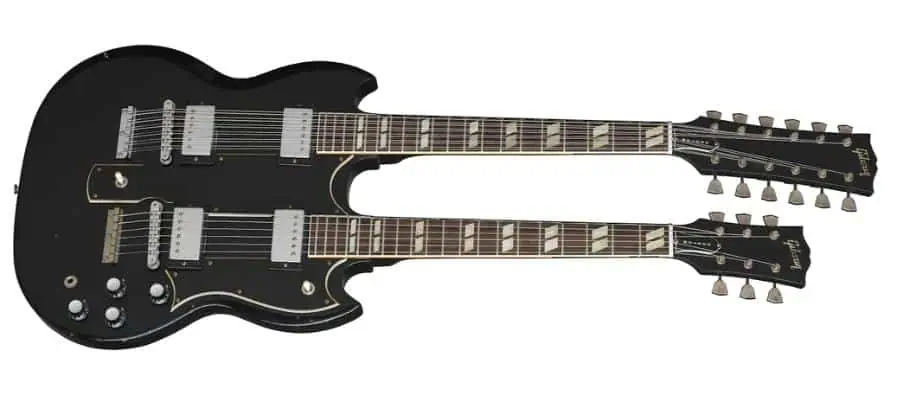
This is the replica of the original Gibson EDS-1275 Double-Neck Electric Guitar, which is a limited production with only 125 guitars worldwide, all signed by Slash himself. The guitar was made by Gibson based on the original guitar he bought in 1990, which can be seen on the official Gibson page.
Guild Crossroads 12/6 Double Neck
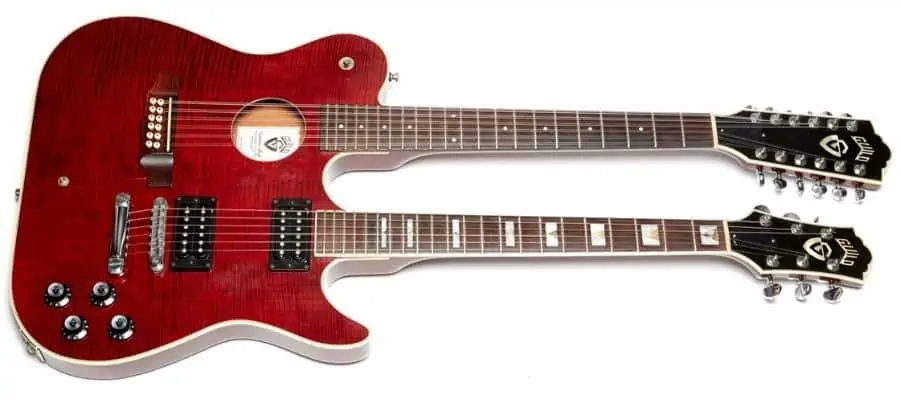

Another double-neck guitar that Slash adores, is the Guild Crossroads 12/6 Double Neck model, which has a 12-string acoustic configuration on one neck and a traditional 6-string electric guitar neck.
It was designed by Slash himself, and he used the guitar on the stage for many songs such as Estranged, Knockin’ On Heaven’s Door, and many more, which had an acoustic guitar and electric guitar parts at the same time. Slash has green, red, and black finished versions of the guitar.
1977 Travis Bean 1000

Another vintage guitar Slash liked was the 1977 Travis Bean 1000, which he used in the recording sessions of songs like Bad Obsession, The Garden, Shine, and Rusted Heroes. The guitar has double humbuckers and a great natural wood finish, which can be seen in the collection photos.
B.C. Rich Perfect 10 Bich 10-String Guitar


Another interesting guitar Slash used live was B.C. Rich Perfect 10 Bich 10-String Guitar, which is equipped with Slash’s signature Seymour Duncan pickups. The guitar has a peculiar 10 string configuration, and Slash used it for a while on the stage for playing the song Chinese Democracy.
Slash’s Acoustic Guitars
Martin D-18
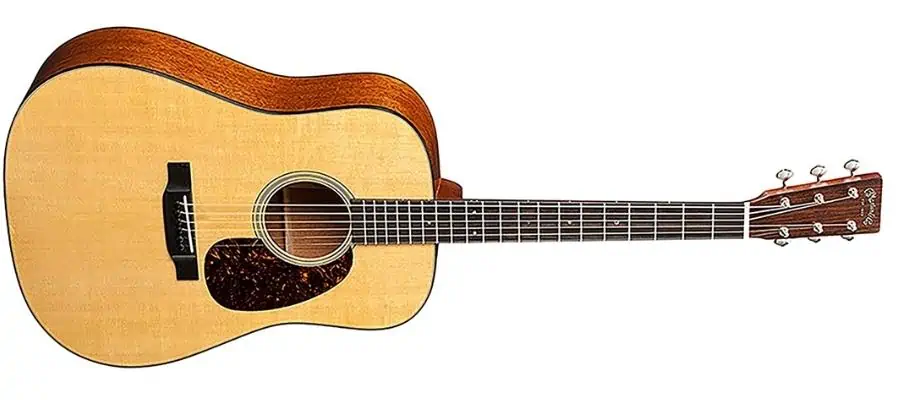

One of the main acoustic guitars Slash used and still uses in most of his live performances as well as in the studio is Martin D-18. The guitar can be heard in the song Not For Me and can be seen in Slash’s live performances, especially in his solo projects with Myles Kennedy.
Maton EBG808 Artist
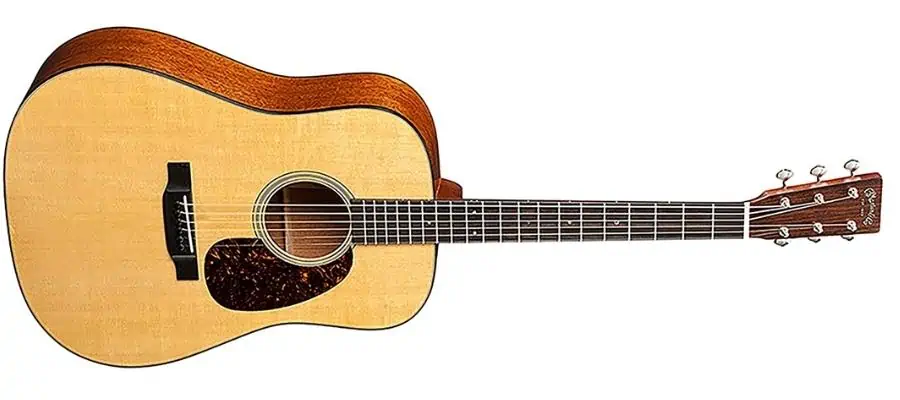

Another acoustic guitar Slash uses in his live shows is the Maton EBG808 Artist Tommy Emmanuel model. The guitar has a great sound with its all-solid Sitka Spruce blackwood along with AP5 Pro pickup.
Martin D-28

During the recordings of Use Your Illusion, Slash mainly used a Martin D-28 acoustic guitar, as he tells in an interview. Martin guitars are his primary acoustic guitar choices, and this one features a Sitka Spruce top along with Sitka Spruce X bracing to allow greater vibration of the top, paired with back and sides crafted from East Indian Rosewood for a modern feel, warm sound, and comfortable playing experience.
Guild JF-30
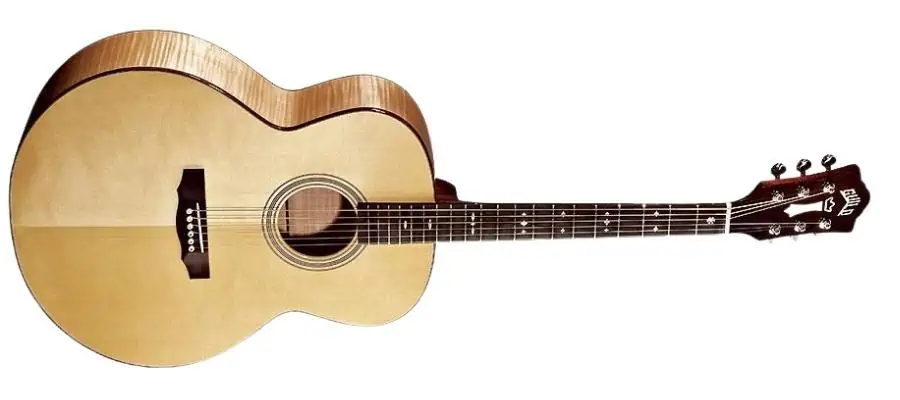

Guild JF-30 is one of Slash’s favorite acoustic guitars for studio recordings. During the Guns N’ Roses days, he mainly used this guitar in the studio. It can also be seen in the official music video of the iconic song Patience. But, the guitar can be heard in many songs like Used To Love Her, You’re Crazy, and One In A Million.
Gibson Sheryl Crow Southern Jumbo Special Edition


Another guitar Slash occasionally uses for the acoustic partitions of his live shows is the Gibson Sheryl Crow Southern Jumbo Special Edition.
Slash’s Pickups
Seymour Duncan Alnico II Pro Slash Signature Pickup
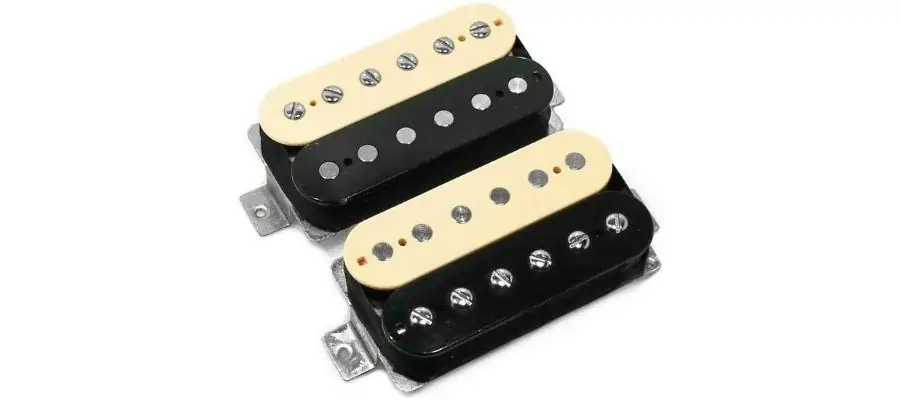
Seymour Duncan Alnico II, Pro Slash Signature Pickup, can be seen on most of Slash’s guitars, like the original AFD Les Paul. The humbucker pickup set has a zebra-style color design with black and creamy white.
The medium to low output pickups uses the alnico 2 bar magnets that provide the great sustain, crunch, and midrange that was so characteristic of the tone of Slash’s original Derrig Les Paul.
Seymour Duncan Alnico II Pro Set

Almost all of Slash Les Paul is equipped with Seymour Duncan Alnico 2 Pro pickups. The pickups provide the iconic classic rock and bluestones.
Fishman Matrix Infinity Pickup & Preamp System
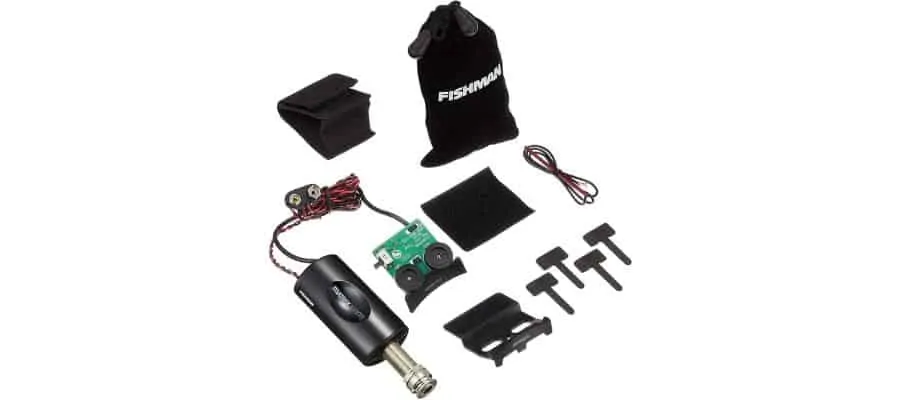
Slash’s pickup choice for his acoustic guitars is the Fishman Matrix Infinity Pickup & Preamp System, which provides a clear, transparent tone and dynamic string response. It succeeds in reflecting the acoustic guitar characteristics through the amp, which most acoustic guitar pickups can’t.
Slash’s Guitar Strings
Ernie Ball RPS Power Slinky Guitar Strings (11-48)
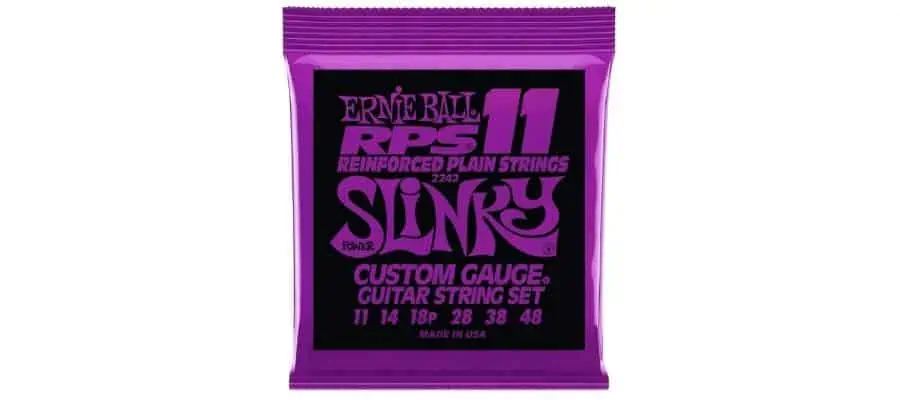
In an interview, Slash said, “Ernie Balls have been consistently great sounding. They don’t oxidize too fast, and they don’t break. They’re tremendously reliable.” As his style is quite aggressive, he uses Ernie Ball RPS Power Slinky Guitar Strings (11-48).
Ernie Ball Paradigm Power Slinky Guitar Strings (11-48)
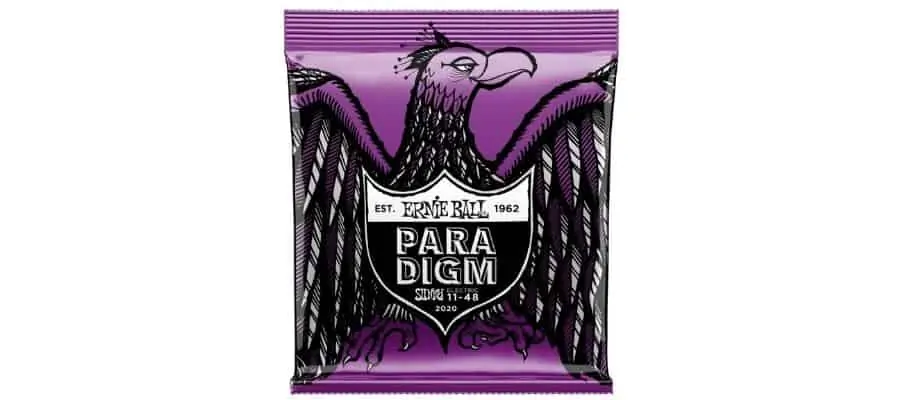
Another string set from Ernie Ball that Slash likes, thanks to their durability, is Ernie Ball Paradigm Power Slinky Guitar Strings (11-48).
Ernie Ball Slash Signature Power Slinky Guitar Strings (11-48)
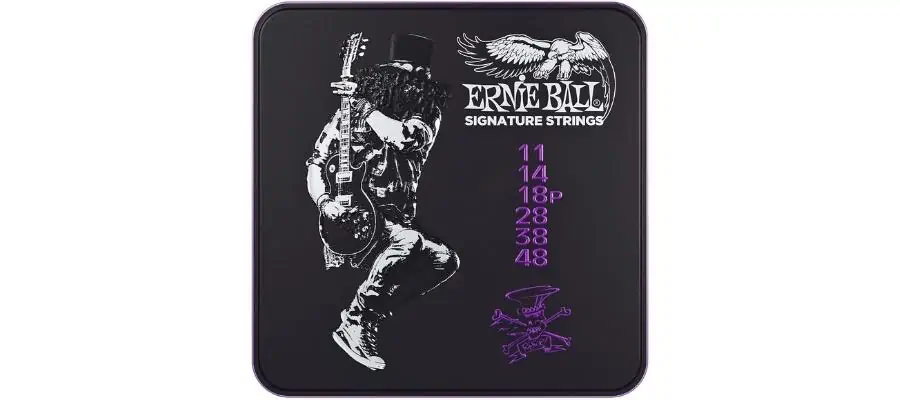
As Slash liked the Power Slinky Guitar Strings series so much, Ernie Ball made a Slash signature series that has the durability and tuning stability Slash seeks for without sacrificing tone or feel.
Slash’s Amps
Marshall JCM 2555SL Slash Signature
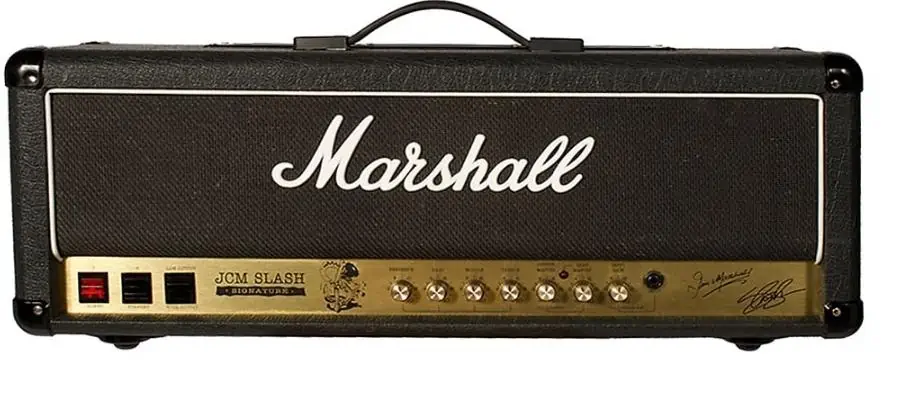
Slash is known for his affection for Marshall amplifiers. He used many different Marshall amps in the studio and on the stage throughout his career. That is why he has so many Slash Signature Marshall amps.
One of them is the Marshall JCM 2555SL Slash Signature which he used for the recordings of the distorted parts of Contraband and Libertad and used live for It’s Five O’Clock Somewhere, Ain’t Life Grand, Contraband, Libertad, and Slash tours.
Marshall AFD100 Slash Signature
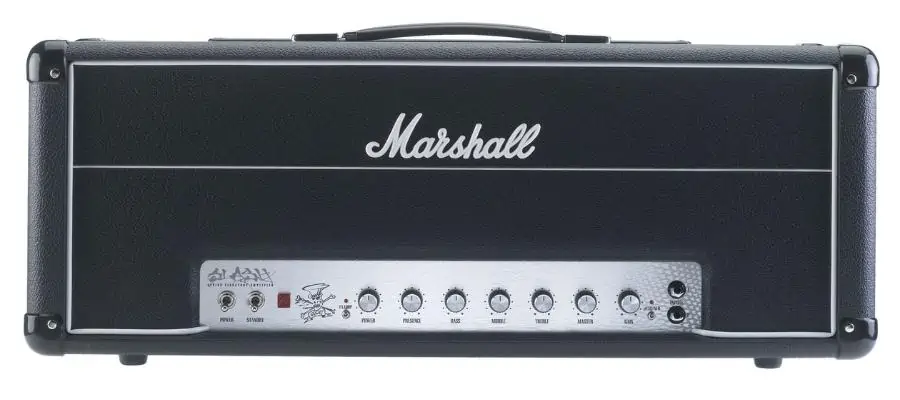
Another Marshall Slash special is Marshall AFD100 Slash Signature, in which he used distorted parts of Apocalyptic Love recordings and live performances for Slash and Apocalyptic Love tours. This amp is specially designed with the Marshall and Slash collaboration to get to the Appetite For Destruction tones as much as possible.
Marshall Vintage Modern 2466
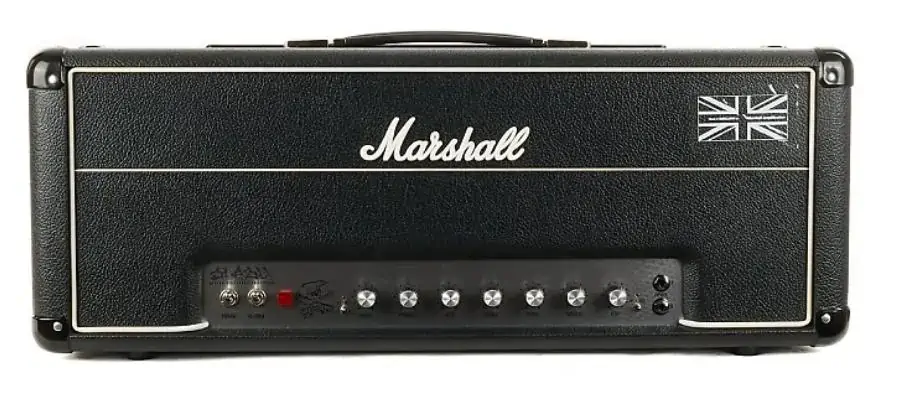
With Velvet, Revolver Slash was using a Marshall Vintage Modern 2466, which is an all-valve single channel amp with two dynamic ranges selectable by footswitch. He used it for the recorded distorted parts of Libertad and the live tour for the album.
Marshall JMP 1959 Super Lead
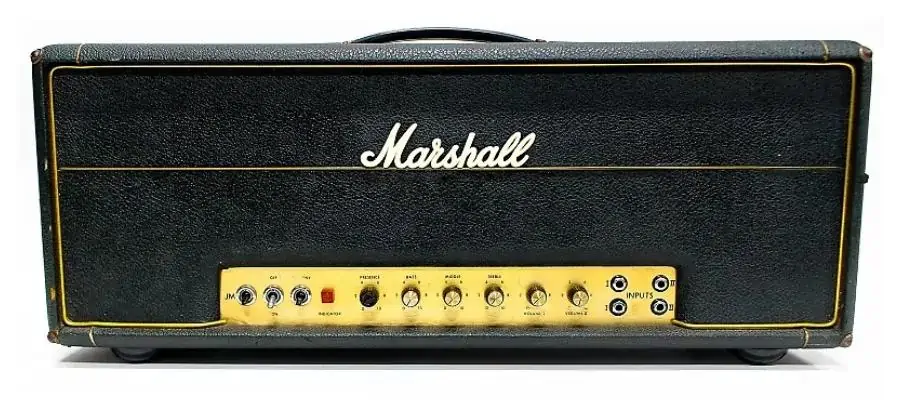
The legendary tones of the Appetite For Destruction were created with a Marshall JMP 1959 Super Load. The amp was modified by Tim Caswell, and Slash used it for the studio and live performances in the Appetite For Destruction days. He also used the amp again after another customization during the Libertad, Slash, Apocalyptic Love, World On Fire days.
Marshall JCM 800 2203
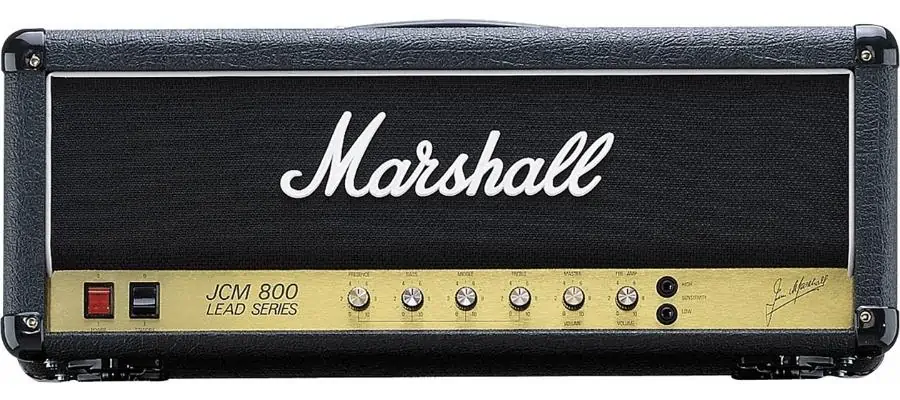
During the early and mid Guns N’ Roses days, Slash mainly used the iconic Marshall JCM 800 2203 head. The amp was modified many times throughout his career, and Slash used it occasionally in different recording and live shows like Apocalyptic Love and World On Fire.
Marshall JCM 2555 Silver Jubilee
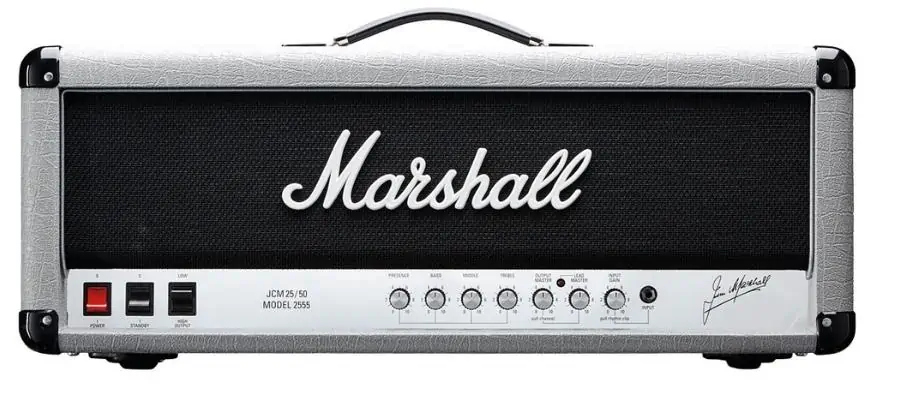
Before the Marshall JCM 2555SL Slash Signature, Slash was using the Marshall JCM 2555 Silver Jubilee, on which the signature model is based on. This amp is heavily based on the JCM 800 of the time, and Slash used it mainly for live shows with Guns N Roses.
Groove EL34
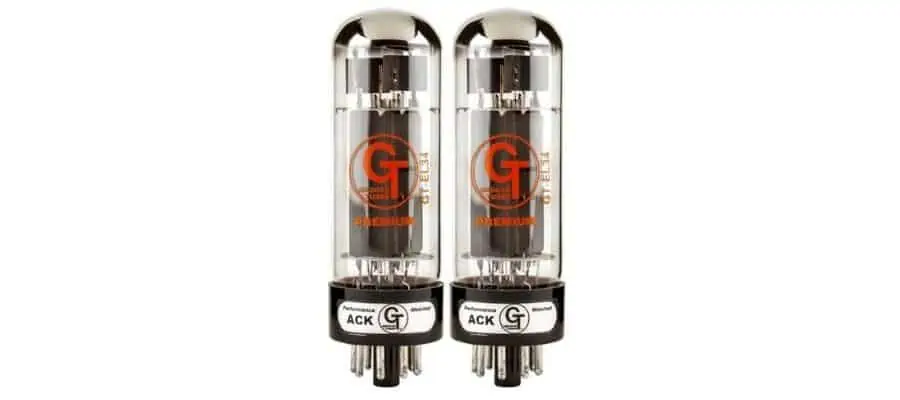
Slash also got help from tubes for his dirty sounds. He was and still is combining the Groove EL34 with JCM 2555 Silver Jubilee and JCM 2555SL Slash amps.
Groove 6550
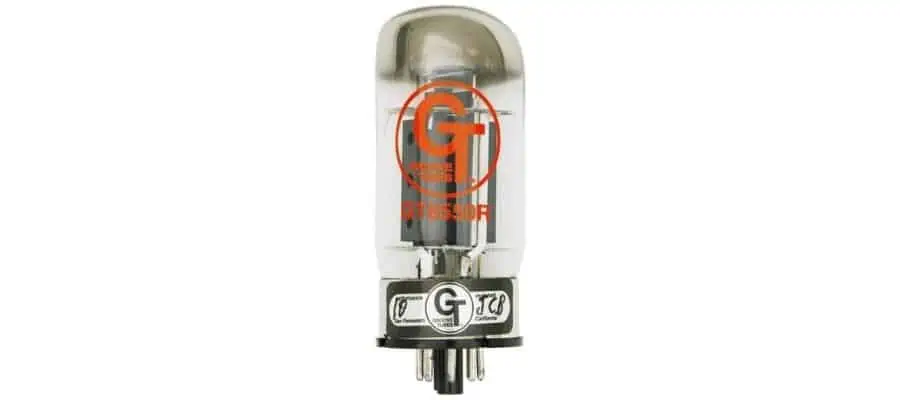
With Marshall AFD100 and JCM 800 heads Slash uses Groove 6550 to get his distorted tones. The tubes provide great vintage dirty sounds that are a big part of Slash’s lead guitar tones.
Groove KT88
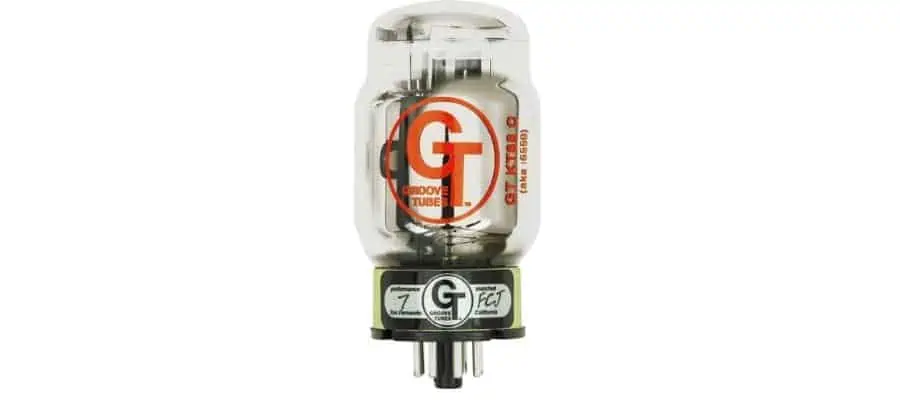
Slash uses a Groove KT88 to break up his clean tones with a tube amp. He often combines these amp tubes with JCM 2555 Silver Jubilee and JCM 2555SL Slash signature models.
Slash’s Cabinets
Marshall 1960AV & 1960BV 4×12

Marshall 1960AV & 1960BV 4×12 are the cabinet choices of Slash that he used with Guns N’ Roses, Slash’s Snakepit, and Velvet Revolver.
Marshall 1960AX & 1960BX 4×12
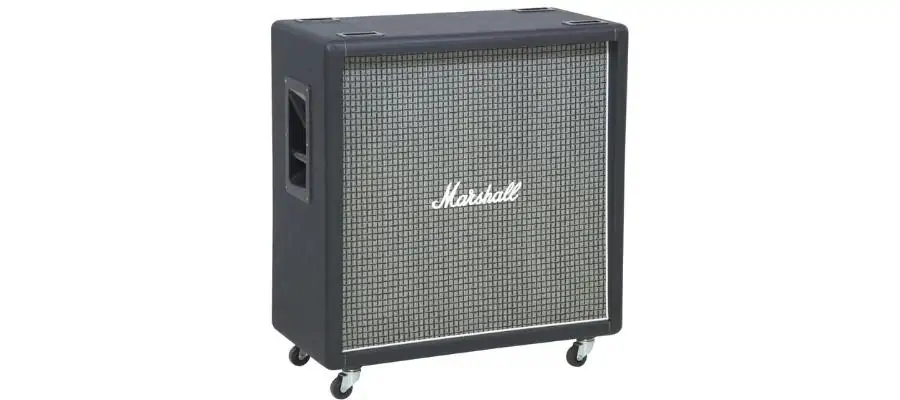
With Slash feat. Myles Kennedy & The Conspirators projects he prefers Marshall 1960AX & 1960BX 4×12 cabs.
Slash’s Pedals
Even though Slash has many pedals that he used throughout his career, he is not a player who uses many pedals to get his tone. He mainly uses his amp reverb, a little delay, an equalizer pedal for his solos, along with the iconic wah pedal or a talk box. This is his main setup with Guns N’ Roses and most of his solo projects.
But with Velvet Revolver and also with his solo projects, he sometimes uses a more extended setup for more sonic versatility.
Dunlop Cry Baby SW95 Slash
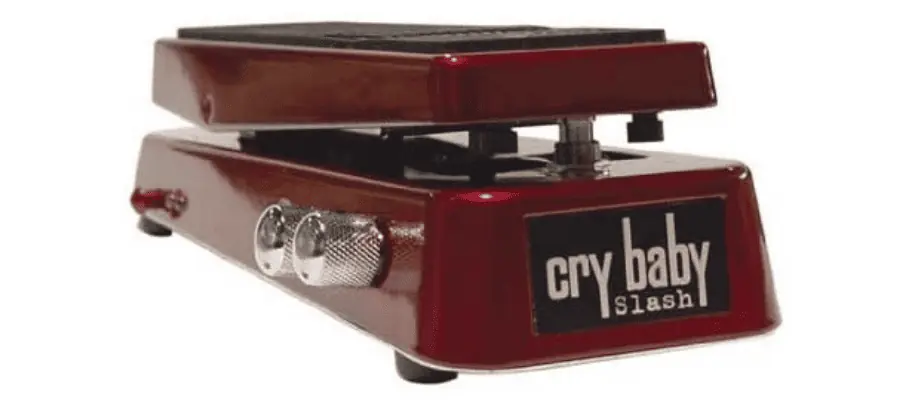
When talking about Slash-style tones, the first effect pedal that comes to mind is Dunlop Cry Baby SW95 Slash, without a doubt. He uses the wah-wah effect on most of his solos. The Cry Baby SW95 is a special wah pedal equipped with a three-band E.Q. and a distortion boost.
In an interview, he clearly indicates his love for this pedal: “The Wah Wah pedal, you know, is probably the one effect that I use the most consistently. The thing about me and a Wah is just something that’s really pure sounding and has a really great sweep. You know, from like low to high it’s just got this really nice sweep to it. And so we worked together for years on the Wah Wah pedal and we finally have this simple Wah Wah pedal that just sounds amazing.”
Dunlop Cry Baby 535Q
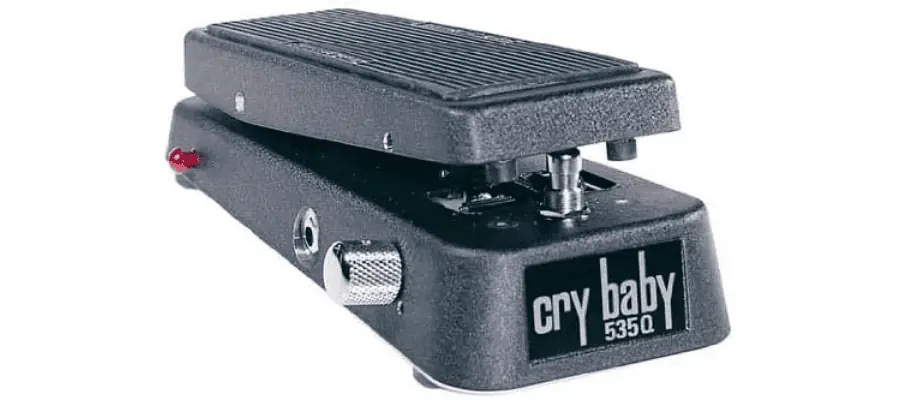
Before the signature Dunlop Cry Baby SW95 Slash model, Slash was using a Dunlop Cry Baby 535Q instead. The pedal can be heard on many songs like Mr. Brownstone, Civil War, Be The Ball, Shine, By The Sword, Apocalyptic Love, and Sweet Child O Mine.
Dunlop Cry Baby DCR-2SR Rack Module
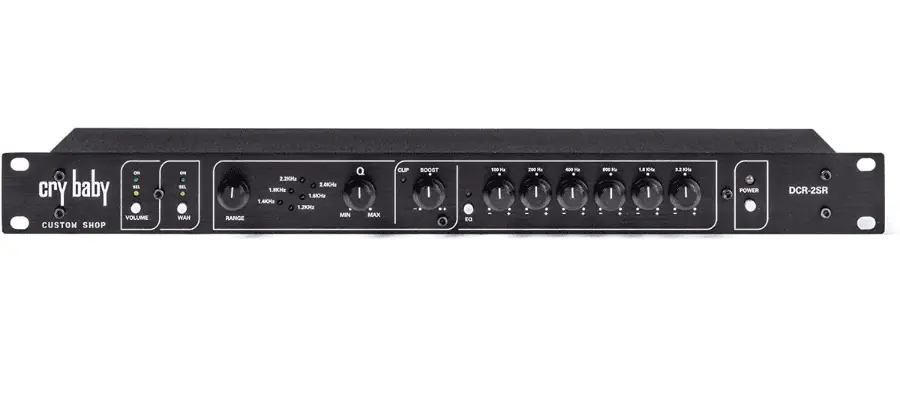
Combined with the wah pedals, Dunlop Cry Baby DCR-2SR Rack Module gives more control over your wah tone for further customization. Slash regularly uses it with his wah pedals. It provides control over the frequency range, Q, and output level of the wah effect and allows for up to six rocker pedals to be connected for access anywhere onstage.
Dunlop Heil HT1 Talkbox
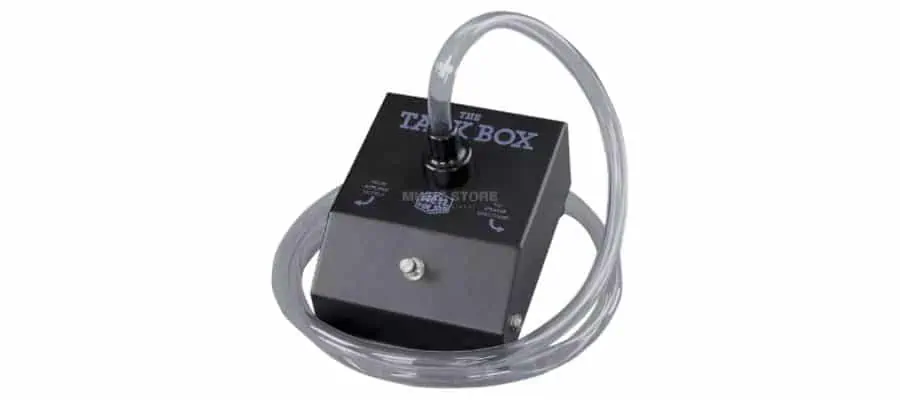
Slash also likes to use talkboxes as he was a musician from the 80s. His primary choice was Dunlop Heil HT1 Talkbox which can be hard on many songs like Anything Goes, Dust And Bones, Lower, Get Out The Door, Watch This, Carolina, and C’est La Vie.
Whirlwind Selector A/B Box
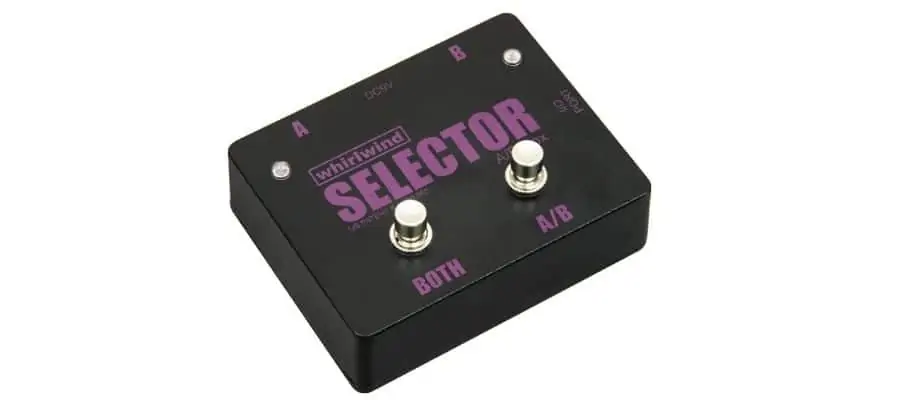
Like many other famous guitarists, Slash prefers to use the Whirlwind Selector A/B Box as his footswitch pedal.
Boss DD-3 Digital Delay
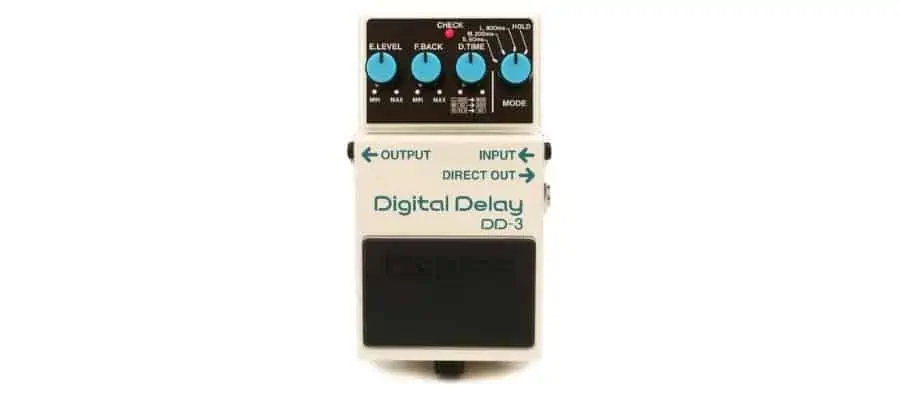
Especially with his lead guitar tones, Slash likes to add a bit of delay to his tone. The subtle delay is provided by the famous Boss DD-3 or the new version BOSS DD-3T pedal. In most of his solos and lead guitar partitions, you can hear the subtle delay giving depth to his tone.
Boss OC-3 Super Octave

When Slash wants more effects in his tone, especially with Velvet Revolver and some of his solo projects, he likes to use an octave pedal. His main choice is the Boss OC-3 Super Octave pedal.
Boss GE-7 Equalizer
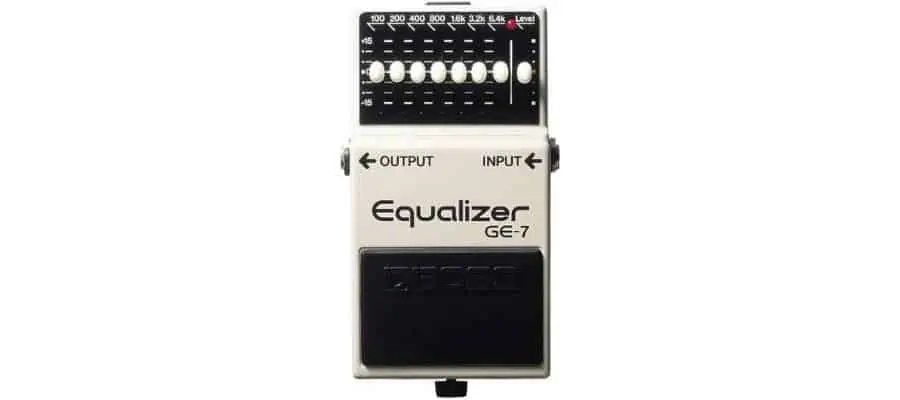
Another regular member of Slash’s pedal setup is the Boss GE-7 Equalizer. He uses it with every project of his in the studio or on stage, mainly to boost his solo tone.
MXR M108 10-Band Graphic E.Q.
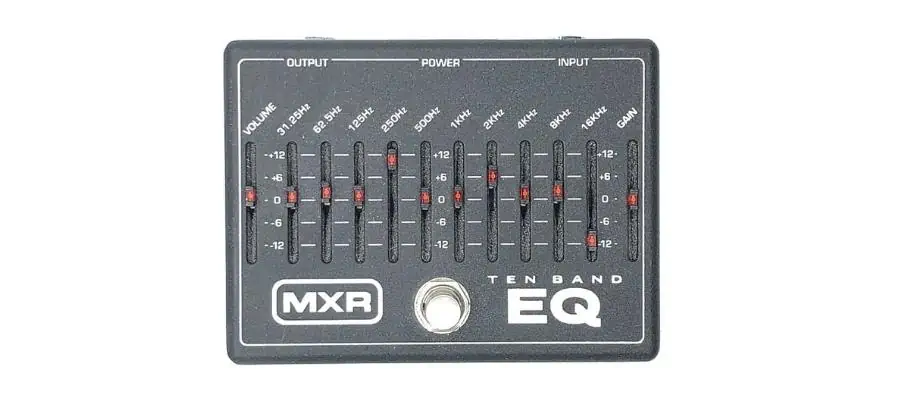
Lately, Slash started using more of the MXR M108 10-Band Graphic E.Q. pedal instead of the Boss GE-7 Equalizer. MXR has always been a good companion to Slash on his pedalboard.
MXR M234 Analog Chorus
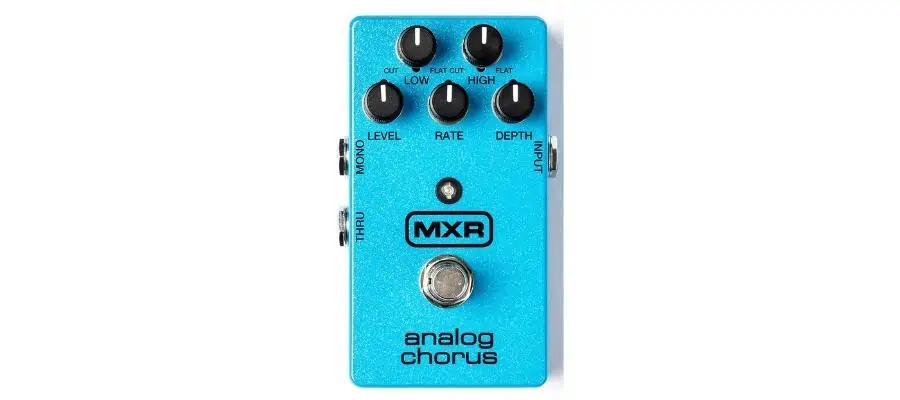
MXR M234 Analog Chorus is a pedal that Slash occasionally uses to achieve a bit of shimmering tone, like in the intro of Paradise City. The pedal provides a kind of 80’s cowboy-style tone that Slash likes to use from time to time.
MXR M101 Phase 90
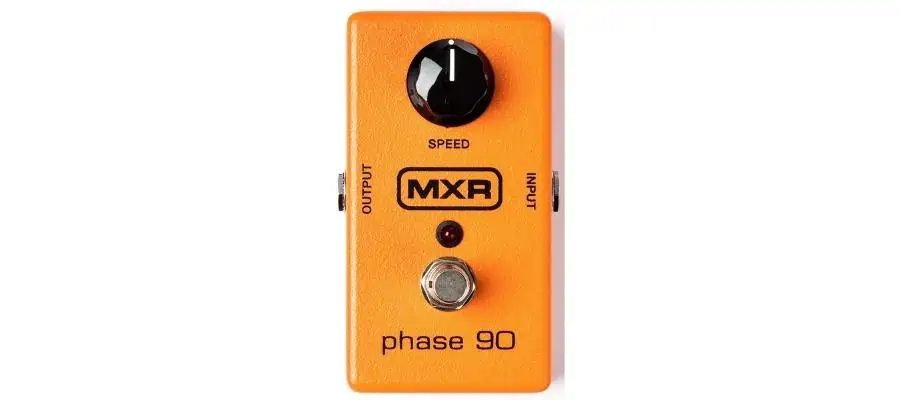
Slash also has an MXR M101 Phase 90 pedal on his setup, but he rarely uses it. He mainly turns it on during lıve performances to get a bit closer to Van Halen’s Panama tone.
MXR M103 Blue Box
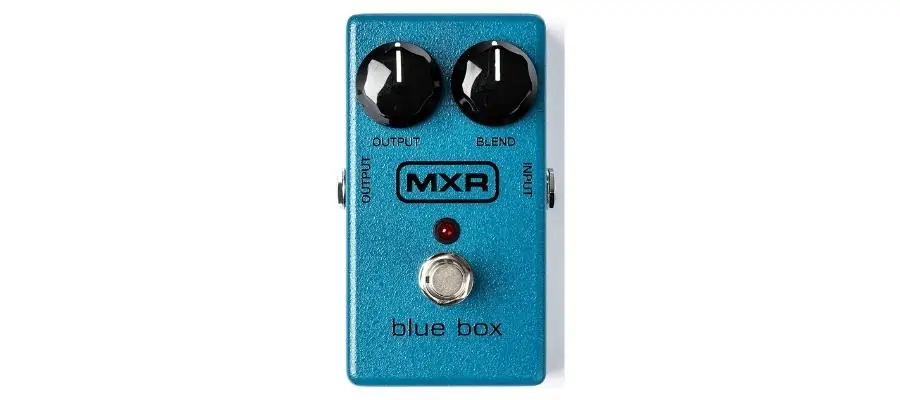
Another pedal to spıce things up in Slash’s setup is the MXR M103 Blue Box fuzz pedal. He rarely uses it with Guns N Roses but uses it more often with Velvet Revolver.
MXR MC401 Boost/Line Driver

To boost his solos, Slash has an MXR MC401 Boost/Line Driver that he uses in most of his live performances for his lead guitar partitions.
MXR Cry Baby KFK Q Zone
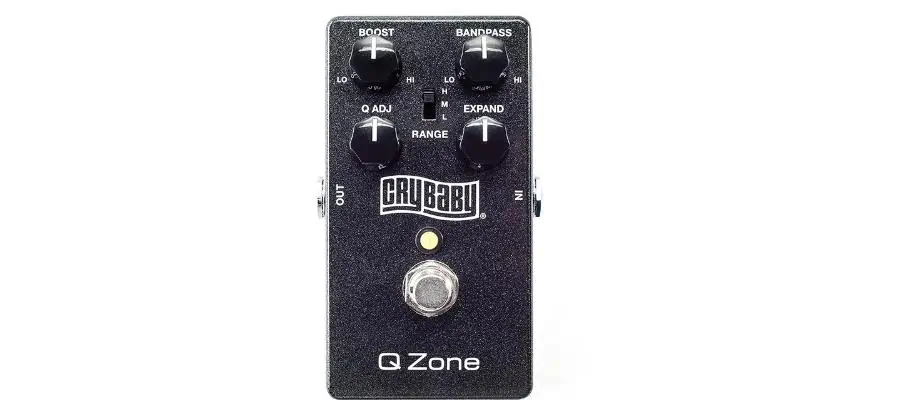
Slash’s pedal setup also features an MXR Cry Baby KFK Q Zone when he does not want to use the treadle. But, mainly, he goes wıth his signature wah pedal.
MXR M135 Smart Gate
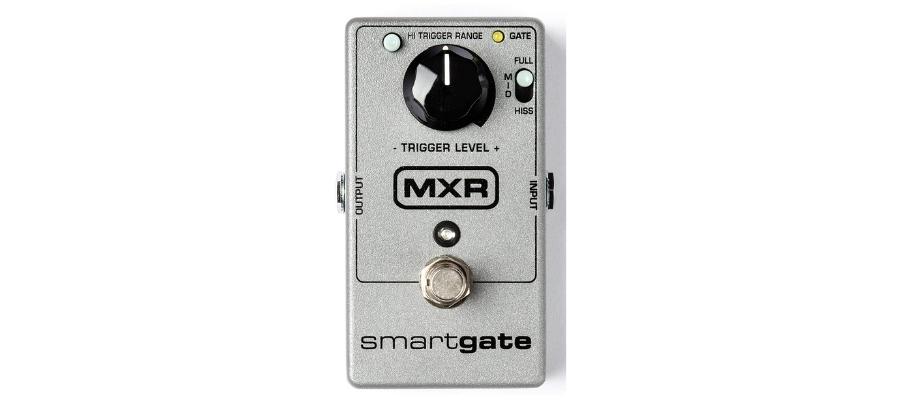
Slash’s choice of noise gate pedal is the MXR M135 Smart Gate. He uses it regularly on every live performance of his.
Slash’s Accessories
Dunlop Tortex Heavy 1.14mm “Slash” Guitar Picks
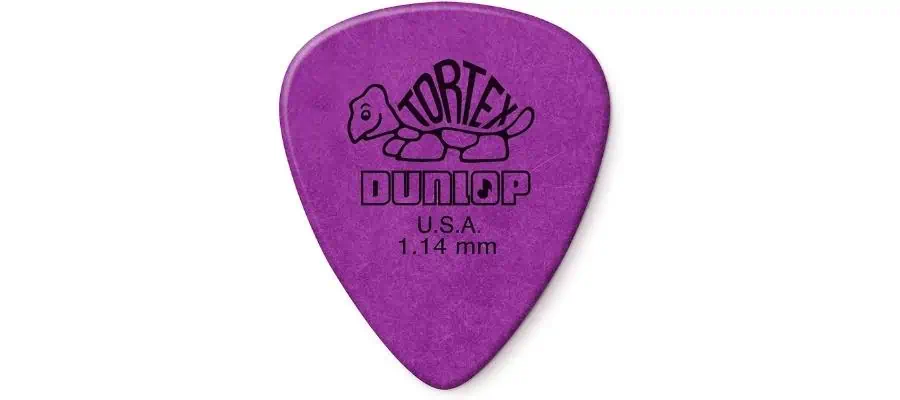
Slash uses a relatively thick and sturdy pick as he likes to play aggressively. Dunlop Tortex Heavy 1.14mm “Slash” Guitar Picks are his primary pick choices.
Red Monkey Slasher Guitar Strap
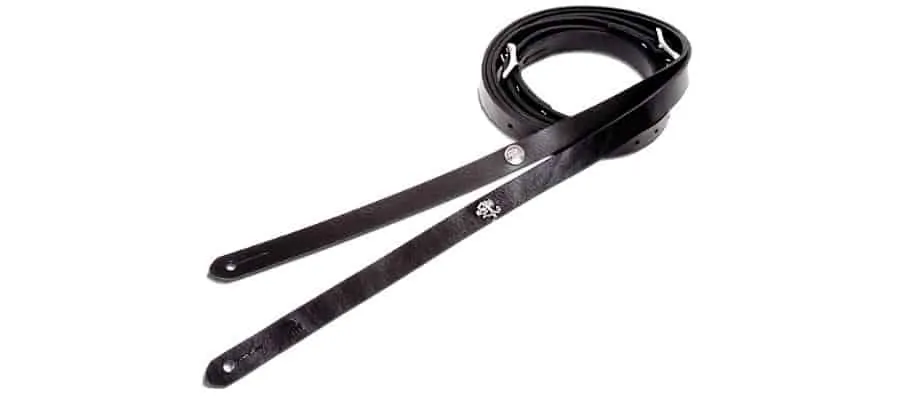
As Slash has a distinctive style with his black felt top hat, glasses along with leather black jackets or vest with black or denim pants, his guitar strap choice is suitable with style. He uses Red Monkey Slasher Guitar Straps, which are made from leather painted in black and are slightly thinner than classic guitar straps.
What Is Special About Slash’s Guitar Tone?
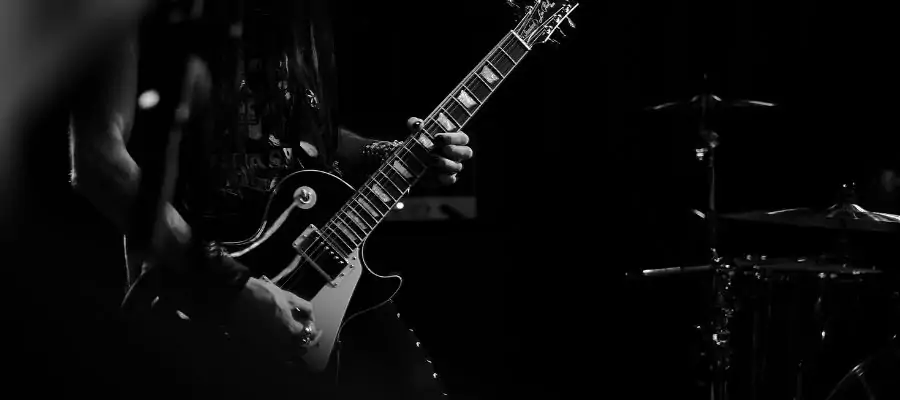
Slash has one of the most iconic guitar tones in rock history. Hıs tones, especially, from the Guns N Roses era, in songs like Sweet Child O’Mine, Welcome To The Jungle, Paradise City as well as November Rain or Don’t Cry are fantastic.
When talking about Slash’s guitar tones, of course, I mainly address his lead guitar tones. The tone is iconic, which is provided by the great Les Paul and Marshall combination. This way, Slash gets 80% of his tone with the right guitar and amp selection.
The rest 20% he enhances with the additional pedals, which slightly change depending on the spirit of the song.
I really like how Slash approaches his tone, with the spine being the rock-solid guitar-amp combination and the make-up being the additional pedals.
To describe Slash’s tone, I would say a lot of sustain, the warm feeling of low-output pickups, vintage Marshall tube amp distortion without the gain set too high, slight delay for a bit of depth, and a lot of mids, unlike other rock guitar tones.
Most metal and hard rock guitarists scoop the mids, but Slash likes to add plenty of mids to his tone.
His tone is
How To Sound Like Slash
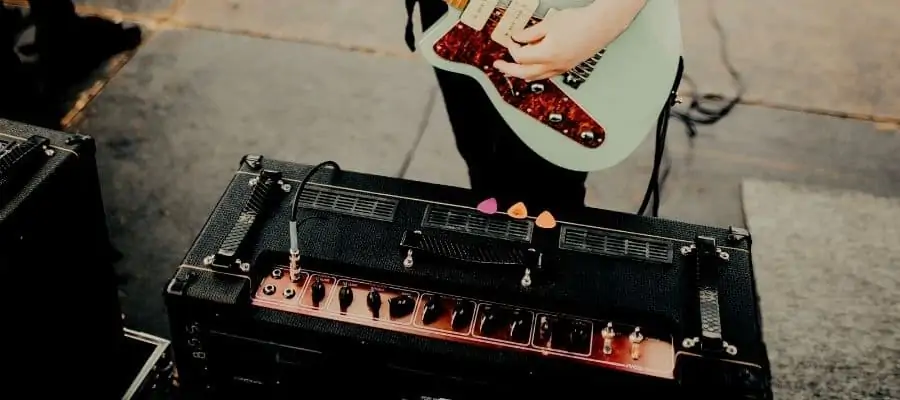
For Slash-style tones, you have to find the correct balance between gain and sustain. The guitar and amp choices play a significant role, while the pedals are not that important, as they are only used for enhancements. The key here is to aim for a low to medium gain setting while not sacrificing sustain with a cranked tube amp.
Guitar
As 80% of Slash’s guitar tone is the guitar-amp combination, the guitar choice is important to get closer to his tone. I would recommend going with a dual humbucker confıguration electric guitar, but the humbuckers should not be high output pickups.
That is why Les Pauls are fantastic for Slash’s guitar tone. They provıde amazing sustain, and the humbuckers are more aimed at classic rock with their vintage style. The sustain is pretty important for Slash and Les Pauls provide a rich singing sustain perfectly thanks to the density of their maple-capped mahogany body as well as its arched top, angled headstock, and set neck.
Although you do not have to use a Les Paul to get close to his tone and a guitar with a medium to low output humbucker pickup configuration with the right amp will get you close, here the distinctive tone of Les Paul plays a big role. So, to sound like Slash, you should go with a Les Paul style guitar or with a Les Paul, which is the best possible choice.
Finally, Slash likes to tune his guitar a half step down, which can get you closer to his tone.
Amp / Amp Settings
Slash is a fan of Marshall amps, and he uses marshall JCM 25/55 versions as his main amp. Another amp he often uses is the Marshall AFD100 Slash Signature amp which is a recreation of the Marshall 1959T Super Tremolo amp. Both amps have Slash’s signature visions which can get you pretty close to his sound.
Well, for his dirty tone, Slash also uses Groove EL34 and Groove 6550 model amps which provide the distortion effect to his tone. Slash does not play with high gain, rather with a low to moderate amount of gain with lots of mid frequencies in his tone.
It is not easy to get his iconic tone with lots of sustain with any amp, but you can start experimenting with these settings. The bass should be around 5, the treble around 6, and the middle 8 to 9. You can turn the presence knob to 8 o’clock while the volume should be close to maximum. You can adjust the gain between 3 to 5.
The important thing here is to use low gain and as much volume as possible. This way, you can get the long sustain with the clarity, and well-rounded tone Slash achieves. If you crank up the gain, you will get the sustain but lose the clarity.
Pedal Effects / Pedal Settings
Slash does not rely much on his pedals to get his tone. As we discussed before, 80% of his tone is provided by the amp-guitar combination, while the effect pedals deliver the spices for different tunes and solo partitions.
Let’s start with his noise gate pedal. Slash sets the mode knob set to reduction, which means the pedal filters the noise out of the signal instead of gating it. As he does not use high gain in his tones, he does not need to deal with noise that much.
His E.Q. pedal is just there for boosting the solo sections. He does not use the E.Q. pedal to modify anything but to boost his tone when necessary.
His chorus pedal serves for the clean tones when he needs to add some shimmering effect like in the intro of Paradise City. It adds a nice color to his tone, and he uses it occasionally. Often he turns the level and depth knob from 2 o’clock rate to 11 o’clock, while the low and high knobs are around 7 o’clock.
Another important pedal for Slash’s tone is the delay pedal. He often uses the Boss D.D. series, especially the DD-3 pedal. To capture the tones of the songs like Welcome to the Jungle, Slither, and Rocket Queen, you need to use a delay pedal. His settings are as follows: The level and feedback are set to around 11 o’clock, delay time around 12 o’clock, and the mode to the 800 ms setting.
Occasionally he also uses the MXR SF01 Slash Octave Fuzz pedal to get a tone like in the solo of Paradise City. He turns the fuzz knob to pretty low while cranking up the tone and octave-up knobs. The rest of the knobs are set to moderate levels.
Coming to the most important pedal of Slash, he uses a rack-based wah system with 3 or 4 controllers. The Dunlop Cry Baby SW95 Slash Signature wah pedal plays the most important role as it also adds distortion to the tone. So, you have to be careful not to crank up the distortion but use it a little in the solo partitions for the boost.
All of the pedal effects Slash uses are for enhancements for his main tone. So, try not to rely on pedals but on the amp-guitar combination as much as possible and as much as your budget allows.
Techniques
Even if you have the exact same gear with the exact settings with Slash, you can not sound like him without playing as he does. Plus, his tone serves his playing style perfectly. So his gear and his playing style are like the two halves of an apple, making a perfect whole when they come together.
If you are covering Guns N Roses or Velvet Revolver, or Slash tunes, try to stick to what he does. If you are trying to compose solos and riffs as Slash does, then let’s break down his playing techniques and melodic choices to understand his approach.
Starting with the riffs, Slash likes short repetitive riffs with slight nuances, as we hear in Sweet Child O’ Mine or Paradise City, or Welcome To The Jungle. This is a common trick in Blues Rock. Try to write simple riffs around four bars with changing chords to have a Slash-style riff.
When writing Slash-Esque riffs and solos, try to stick to the minor pentatonic and blues scales and drive into major scales and modes rarely to spice things up a bit. However, he often brings the harmonic minor scale to his solos which are mainly played in the blues or minor pentatonic scales.
Slash is known for his simple riffs and licks instead of complex, wide-ranging riffs and licks. He uses a lot of hammer-ons and pull-offs when he wants to play fast, but he does not shred often. Yet, the legatos are the key to his soloing style, especially legatos combined with semi-classical ornaments, such as trills and turns.
When he wants to get fast, Slash uses complete-scale runs, mainly full of hammer-ons and pull-offs. These scale runs are perfectly balanced between his melodic lines in soloing. Often he puts a catchy melody into his improvisation, which he goes from and turns back in different parts of the solo.
Finally, the bends. Slash is famous for making his guitars cry with long bends that sound perfect with the sustain of his tone. Like many guitarists, he uses different bends like bluesy bends and whole note bends, half bends, and bends with harmonics.
However, his characteristic bend style is the ghost bend, which is a bend with the string bent upwards before it is played, and then released when played, allowing the pitch to bend back down.
His solos are generically melodic and built-around catchy riffs and licks with a sudden scale run bursting with speed. The speed is provided by hammer-ons and pull-offs while the bends create the characteristic sound with the sustain.
Slash Guitar Rig Examples
Budget
With a small budget, it is not easy to replicate Slash’s tone perfectly, but you can get close. For this, you will need a Les Paul style guitar, a modeling amp to get the Marshall tube amp tone, and a wah pedal.
Guitar
- Mahogany Body with a AAA Flame Maple Veneer Top
- Epiphone LockTone Tune-O-Matic
- Adjustable Truss Rod
- Epiphone Ceramic Plus Zebra-coil Humbucker Pickups in the Neck and Bridge
Well, for the budget rig, you can go with the Epiphone Slash AFD Signature Les Paul Special-II guitar. It is the best budget guitar that can get you close to the Slash style. It has Ceramic plus double humbuckers, AAA Flame Maple top with a cherry Mahogany back.
Amp
- Authentic modelling of Marshall tones with pro quality FX
- 14 MST preamps, 4 MST power amps, and 8 MST speaker cabinets
- Connect via Bluetooth to stream music from your iOS or Android device
- Connect via USB to use DAW interface to record and stream audio from your...
With a tight budget, it is impossible to get a Marshall tube amp which Slash’s tone relies on. However, there are nice modeling amps that can get us close. Sticking to Marshall, I recommend going with the Marshall Code series.
Pedals
- Modeled after Slash's legendary wah-wah tone
- Searing high gain distortion and Fasel-loaded Classic circuit
- Power: Dunlop ECB004 AC Adapter or Two 9 volt batteries
- Dynamic control
Well, you do not particularly need any pedal with the Marshall code amp, as it is a modeling amp that can give you whatever you want. However, getting a wah pedal is extremely necessary to sound like Slash on the solos. A simple one like the Dunlop GCB95 Cry Baby Standard Wah Pedal will get the job done.
Mid-Range
If you have more bucks to spend on Slash-esque gear, you can upgrade any of the gear in the budget example. The main structure is again the same with a better Les Paul style guitar, a stronger Marshall amp, and a better wah pedal; well, the best one in this case as it is the Cry Baby Slash signature wah pedal.
Guitar

Epiphone Slash Les Paul Standard is one of the best affordable replicas of Slash’s iconic Les Paul. It comes in a variety of colors and features a mahogany body, maple top, mahogany neck, laurel fingerboard, and 2 Humbucking Pickups.
Amp
- 50-watt Modeling Guitar Amplifier with 12" Speaker
- 4 Digital Power Amp Models
- 14 Digital Preamp Models
- Bluetooth Connectivity
For this price range, it is better to stick with the modeling amps. So, I recommend the Marshall Code 50, which is stronger than the budget option for more output volume, which is essential for Slash tone.
Pedals
- Modeled after Slash's legendary wah-wah tone
- Searing high gain distortion and Fasel-loaded Classic circuit
- Power: Dunlop ECB004 AC Adapter or Two 9 volt batteries
- Dynamic control
Again, you only need a wah pedal as the amp in the rig is a modeling amp. However, this time I suggest Dunlop SW95 Slash Signature Cry Baby Wah Pedal, which is the exact wah pedal Slash uses on the stage and in the studio.
High-End
If you have a high budget, you can use the exact gear that Slash does to get to his tone. This way, it is quite easy to get his tones as most of his tone relies on his amps and his guitar.
Guitar
- Seymour Duncan Alnico II Pro Slash pickup in the bridge and neck position
- The headstock is adorned with the Slash signature and artwork.
- Gold Speed Knobs
Well, what is better than using the exact same guitar made especially for Slash to get his tone. That is why I recommend you to get the Gibson Slash Les Paul Standard Electric Guitar.
Amp
- 100-watt Reissue Tube Guitar Amplifier Head with High/Low Output Switching
You can pair the iconic Marshall 2555X Silver Jubilee 100-watt Reissue Tube Head with a Marshall cabinet to catch Slash’s tone. He uses the older original version of the same tube head, which is impossible to find these days.
Pedals
- All-analog bucket-brigade circuitry
- Create classically lush, liquid textures
- Ultimate tone control
- Model Number: M234
- Noise Suppress/Noise Gate Guitar Pedal
- Compact noise suppression pedal for eliminating noise and hum in guitar and...
- Unique noise detection circuit preserves the natural attack and envelope of...
- Threshold and Decay knobs allow for shaping the elimination/suppression as...
- MXR joined forces with Custom Audio Electronics founder Bob Bradshaw to...
- Cleans up nicely when you roll back your guitar volume, making it extremely...
- High-quality components provide quiet operation and trouble-free...
- Custom Audio Electronics has made limited quantities of pedals for select...
- Compact delay pedal with superb BOSS sound quality
- Provides 3 delay time modes and a Delay Time control for quick adjustment...
- Hold function repeats delay sound indefinitely for interesting effects
- BOSS 5-year warranty
- Fuzz tone with a separate sub octave voice & an octave up fuzz
- Internal gain & tone pots shape the octave up fuzz effect
- All analog circuitry, true bypass
- Heavy duty housing with durable jacks and switches
- Modeled after Slash's legendary wah-wah tone
- Searing high gain distortion and Fasel-loaded Classic circuit
- Power: Dunlop ECB004 AC Adapter or Two 9 volt batteries
- Dynamic control
While Slash’s tone mainly relies on the amp-guitar combination, the effect pedals are necessary to spice things up for different songs. As the chorus pedal, he uses MXR M234 Analog Chorus, as the noise suppressor BOSS NS-2, as the booster MXR MC-401, for the delay effect, which he uses often, BOSS DD-3, and as the octave-fuzz pedal MXR Slash Octave Fuzz. Of course, you should also have the Slash Cry Baby SW95, which is the most important pedal on the setup.
Conclusion
With his distinctive outfits as well as his sound and playing style, Slash is one of the most iconic guitarists in rock history. Many guitarists are in love with his guitar tones, especially in the Guns N Roses era in the albums such as Appetite For Destruction and Use Your Illusion, which are the albums I have taken into account when giving the suggestions to replicate his tone.
Slash’s guitar tone is not budget-friendly to replicate as he relies mainly on his guitars and amps, which are quite high-end gear. But, you can get close to his sound following the steps in this article.
If you found this article useful, you may want to save this pin below to your Guitar board.
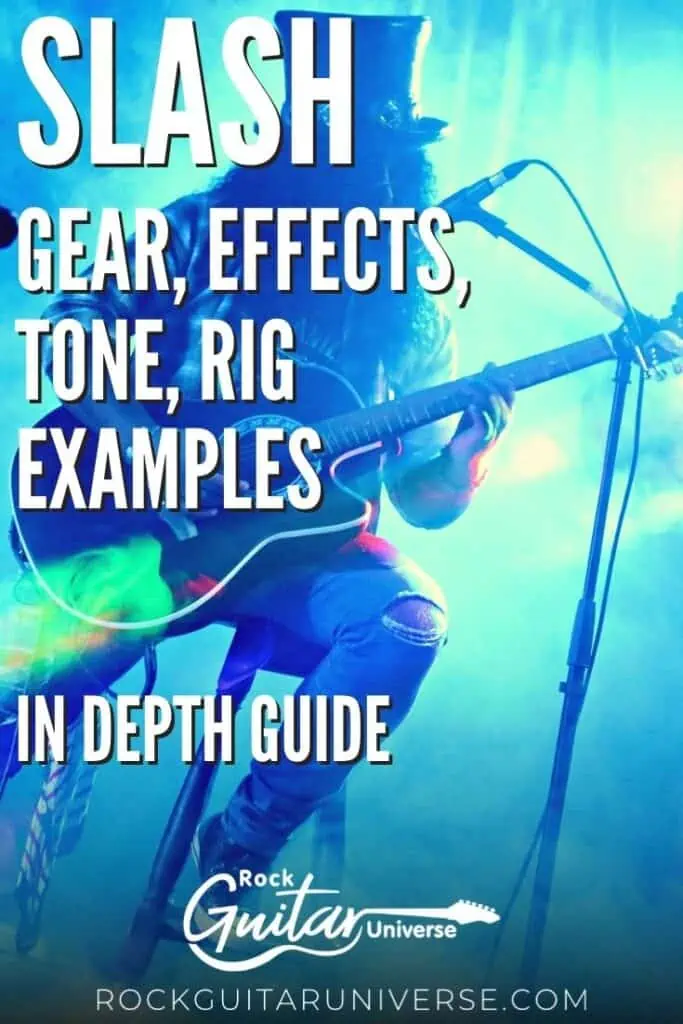
Last update on 2025-07-06 / Affiliate links / Images from Amazon Product Advertising API
Recent Posts
Some guitarists insist on buying an expensive amplifier with their electric guitar. They assume that this is a must for every type of guitarist out there. However, in some situations, this isn’t...
Top 50 Free Realistic Guitar VST Plugins With Sound Examples
As technology has rapidly advanced in the recent decade, computers are stealing more and more roles from physical musical instruments and accessories. Nowadays, you do not need expensive amps,...

